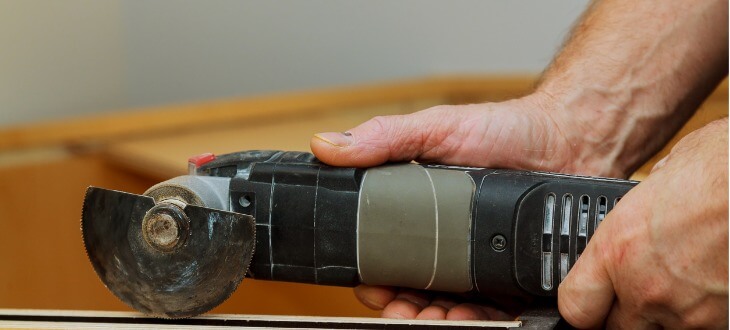An oscillating tool is used mainly for home repair or remodeling. It does it all, from sawing to polishing. These tools can be used to create a clean and precise cut because this tool decreases drag force. It is also used on a variety of materials such as wood, metal, grout, and so on. Let’s explore how they work, their features, things to consider when using or buying this tool, and the variety of ways it can be used.
What is an oscillating tool?
This is a power tool that has a ton of changeable blades to choose from. This includes blades for polishing, sanding, scraping, and so on. This tool may cut through a variety of materials such as drywall, metal, wood, plastic, and fiberglass.
Features of an Oscillating Tool
Oscillating tools have many different features that you can choose from. They are compatible with a variety of different blades and heads, to get your project to where you need it to be. Some examples of these heads include blades, punches, and notches.
This machine has a thicker spine to offer less deflection. Deflection can occur when people try to cut denser material. This thicker spine will also allow you to have a better grip on the tool.
Things To Consider While Shopping for an Oscillating Tool
Not all oscillating tools are created equal and all have different uses. Some things you should consider while shopping or using one are:
- Power. Most range between 3.5 and 4 amps. You may want to see what speed range your product needs.
- Blades. Most models allow you to change out their blades based on what you’re trying to cut. You may want to consider what types of blades are compatible with your model.
- Cord Length. Models are power operated and come with a 10-foot cord. Do you need one that is longer? You should take your work environment into consideration when choosing this length.
How does an oscillating tool work?
Oscillating tools work by moving their head side to side at a rapid speed. Other tools work by moving back and forth rapidly. Other tools are hard to use due to their less flexible options. However, there are a ton of options you can choose from when it comes to attachments for your oscillating tool. There are many different heads you can attach to your tool so you can achieve multiple project objectives.
Oscillating Tool Uses
There are many ways Oscillating tools can be used. Let’s explore the different ways these tools can be deployed:
- Sand your wood. You can sand wood smoothly with this device. Their top makes it easier to put sandpaper on and sand away.
- Remove old paint. There is a blade you can attach to remove old paint. Doing so allows you to sand your item down to a smooth surface and can be applied to metal.
- Cut through drywall. This tool has a precise way of cutting through drywall, including cutting it in half or cutting holes through it.
- Have a round blade or a straight blade. The blade will allow you to do different things. A round blade can make longer cuts, while a straight blade will allow you to cut through thick materials.
- Remove old adhesives or caulk. This multi-tool can be used to remove any old adhesives or caulk. You can even get an extra attachment that allows you to lift the corner of flooring, such as tiles.
For All Your Metal Needs, Contact Tampa Steel & Supply!
When it comes to metal services, blasting is just one way to get your metals looking like new. At Tampa Steel and Supply, we offer a variety of products and services for all of your metal needs. We can even help you DIY your projects using oscillating tools. Have questions? Give us a call today to learn more!
Request a Quote Online
Or Call Tampa Steel & Supply at (813) 241-2801

